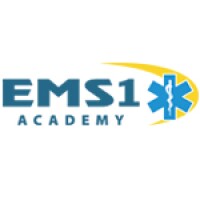The EMS1 Academy features the “Patient Assessment and Exam” course, a one-hour accredited course for emergency services personnel. Complete the course to learn more about patient interviewing and assessment, as well as how to calculate Glasgow Coma Scores (GCS) and perform head to toe exams.
“When was your last oral intake?”
“What were your events leading up to this incident?”
All-too-often, I’ve seen too many new EMT (and even paramedic) students parrot back these very phrases. And you know what? It’s our fault!
For way too long, educators and EMS programs have emphasized just memorizing “the sheet” (referring to the NREMT psychomotor skills evaluations forms for patient assessment). For way too long, students have been taught to interrogate their patients, rather than converse with them.
Now, hopefully this article doesn’t resonate with your teaching or practice style ... but if it does, please keep reading on!
Walk into the room, put your hands in the air and repeat after me, “BSI, scene safe.”
Education systems have failed us. Heck, I was guilty of it, too, early in my teaching career. Now, however, that practice needs to end. This paradigm needs to change.
Educators – STOP setting this standard!
Here’s why this process of instruction needs to stop. One of the biggest gripes that employers have related to new EMTs and paramedics entering the workforce is that they’re not prepared for the real world. Well, I’ll bet this lack of conversational training is a significant factor indicating why.
Please, do your students a favor: teach them to converse with their patients. They’re counting on you to both teach them the necessary skills to be a competent provider, and to have the confidence to be one once they get their new patch.
STOP interrogating your patients!
Our patients are nervous enough having to call 911, hear the ambulance (and maybe a fire engine) wailing down the road, and have a big billboard parked in front of their house broadcasting that something is going on with their family. The last thing they need is to feel as though they’re giving a deposition for why they called, and the last person they want caring for them is someone who sounds like they can’t function without following notes on an evaluation sheet.
Here’s three take-away tips for educators to share with any new EMS provider, or actively practicing provider, to embrace in order to change their habits and begin to converse with their patients – rather than interrogate them.
1. Pay attention in clinicals
While you may only have one hospital or ambulance clinical built into your EMT program, take advantage of it. Listen to as many lung sounds as you can ... even if the patient’s complaint is for a stubbed toe. Take manual – not automatic – blood pressures. And above all, listen to how the nurses, paramedics, mid-level providers and physicians converse with the patient. What may seem like a simple conversation is likely more purpose-driven than you think.
Debrief with your preceptor after each call, after each patient. Ask him or her “why” a certain question was asked. What was the intent or reasoning behind it? What if the patient had answered differently? How would that have changed their questioning?
2. Let the patient explain
Often, the patient can better explain or correlate their symptoms into something that is more tangible to you, like when they say, “it feels like an elephant is sitting on my chest.”
There’s no check box for that, no drop-down item, no ICD-10 code (or at least I don’t think there is).
When referencing the events leading up to the incident, the quality of their pain or their chief complaint in general, allow the patient to explain it in his or her own words. Then, you can formulate it into appropriate medical terminology. When in doubt, remember that plain text is best and is typically universally understood. Epistaxis means nose bleed, but so does simply saying “nose bleed.”
3. Don’t always think linear
You can always tell which testing candidates have put countless hours into memorizing the flow of their patient assessment evaluation sheets. They can recite the entire form with an exact flow, nearly verbatim, and without missing a single point.
Great, they’ll likely pass their psychomotor exam station, but it doesn’t necessarily mean that they’ll be able to have a conversation with their patient beyond what’s typed on the sheet.
Teach your students; don’t be afraid to follow the patient’s story; what they tell you. Keep the other checklist items in the back of your mind, but feel free to go with the flow a little bit. Ask your patient clarifying questions right now, rather than later on.
Rule-out differential diagnoses as you pass them by in your assessment. By no means do you need to go off-tangent and have the patient explain (in detail) how they had bunion surgery in 2006, but you could certainly get the conversation back on track by interjecting, “has your chronic back pain improved, or worsened, since that event, and have you been prescribed any of your medications as a result of it?”
My point behind all of this is to focus assessment techniques toward methods that sound more natural, more like a conversation. You can still find out when the patient’s last oral intake was by simply asking, “When have you last had anything to eat or drink?”
Have your students take their blank patient assessment form and write in the margin next to each line an alternative question or response, something less interrogating and more conversing. This will help them to become better clinicians and more prepared for the field once they get that new patch on their shoulder.














